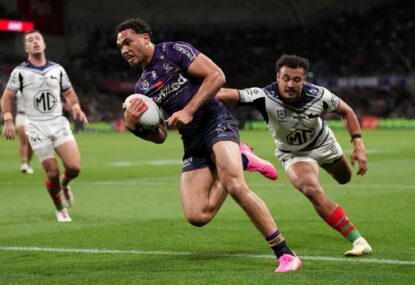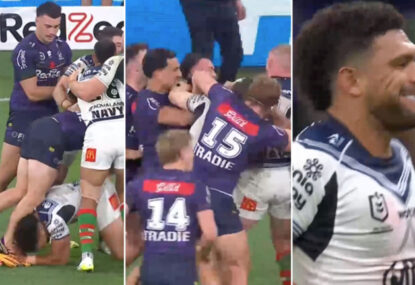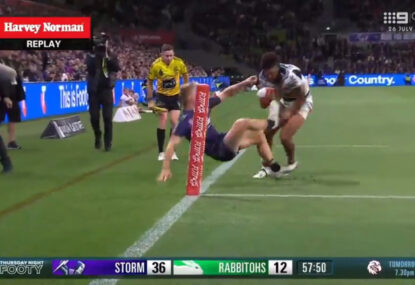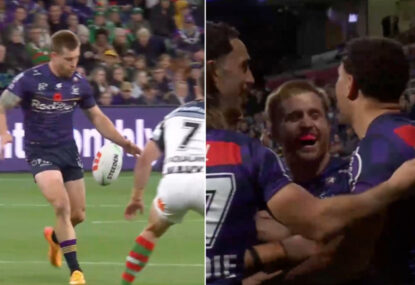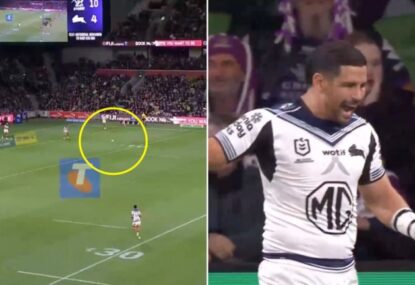There was a lot of debate for and against the banning of the shoulder charge outright not so long ago.
Recent events regarding Billy Slater have brought it to light and there has been much discussion and obvious emotion surrounding it.
Like many rules in the NRL and life, the debate to legislate often stems from individual situations or tragedies and are discussed when opinions and emotions are high.
Historically, the shoulder charge is a tool much like any other tackle to be used by the defending team when deemed appropriate.
Much like the short ball in cricket, a bouncer can be strategic. An ill positioned bouncer can be dangerous. As we have seen in the case of Phillip Hughes and others, it can be lethal.
The shoulder charge, when executed well, is a spectacle, much like a traditional style front on tackle under the ribs from a player like Trevor Gillmeister or Dallas Johnson where the ball player’s neck could sustain a whipping motion.
The ball player could also be lifted off their feet in the process of the tackle before being driven into the ground. So too can a player on the end of well-timed and executed shoulder charge, albeit with different mechanics.
Shoulder charges can go wrong. And when they do, they should be severely punished at the judiciary. But is a Dylan Napa style tackle (and I don’t mean to single him out, he has recently just been a well-documented instigator of the tackle style this season) where he leads with his left side as the attacker evades to Napa’s right, or vice versa, less dangerous even when there is no head contact than a well-executed shoulder charge that also only affects the torso or limbs?
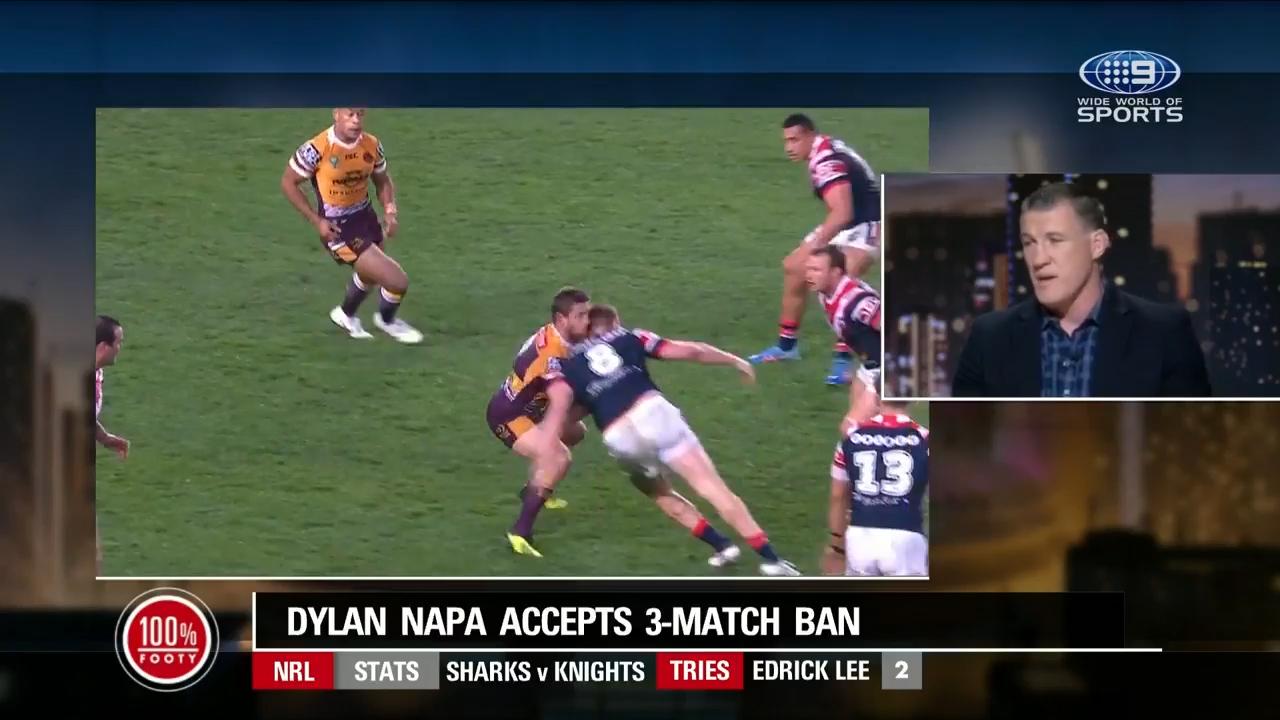
Dylan Napa was handed a three-match ban after his tackle.
Currently the law states the Napa-style tackle of leading with the wrong shoulder is deemed acceptable yet any shoulder charge is not.
When Napa-style tackles or shoulder charges go wrong there should be strong deterrents in the way of time off the field.
But should the NRL be policing well executed tackles in their contact sport? The use of both incentives and laws have been shown in the past to work in all areas of life, sport and business.
History has also shown that at times, ill-conceived laws or incentives have had unintended consequences.
In a more liberal approach, the shoulder charge or ‘Napa’ style tackle would not be illegal, but would heavily punished if they are poorly executed.
Could it be imagined coaches and boards of clubs self-regulating tackling styles if they have had to deal and manage eight, ten or 12-week suspensions several times in a season?
Or do we want the NRL to take the conservative approach and ban something that has the potential to be dangerous and forego any potential enjoyment that a well-timed and otherwise executed tackle gives fans?
For example, if the NRL start banning more tackles that have the potential to go wrong, does that mean that any head on driving tackle that makes impact near the hip and lower torso should be banned?
In that instance, there is possibility that when driving up through the tackle, slightly shorter defenders will position the ball carrier off the ground with a high centre of gravity.
Such a position may make it more likely to have that ball player placed in a dangerous ‘over the horizontal’ position. Would that style of tackle ever be considered dangerous or is the ‘above the horizontal’ rule already in place enough to stop the defender driving up through the tackle completely?
Likewise, would a “contact to the head rule” for a ‘Naperesque’ tackle or shoulder charge be enough?
There are risks with both stances from the governing body. There is risk that the conservative path will get the NRL more sanitised.
The NRL will always have heavy impacts whether legal or not, but it could become a lot more sanitised with more and more rule changes.
There will also be the extra burden on the referees who have a difficult enough job already.
Refs are a vitally important component of our game yet are ridiculed by the masses and press every week. There is reason to believe more rules to adjudicate on will be more of a burden for the whistle blowers. So that is a very big risk.
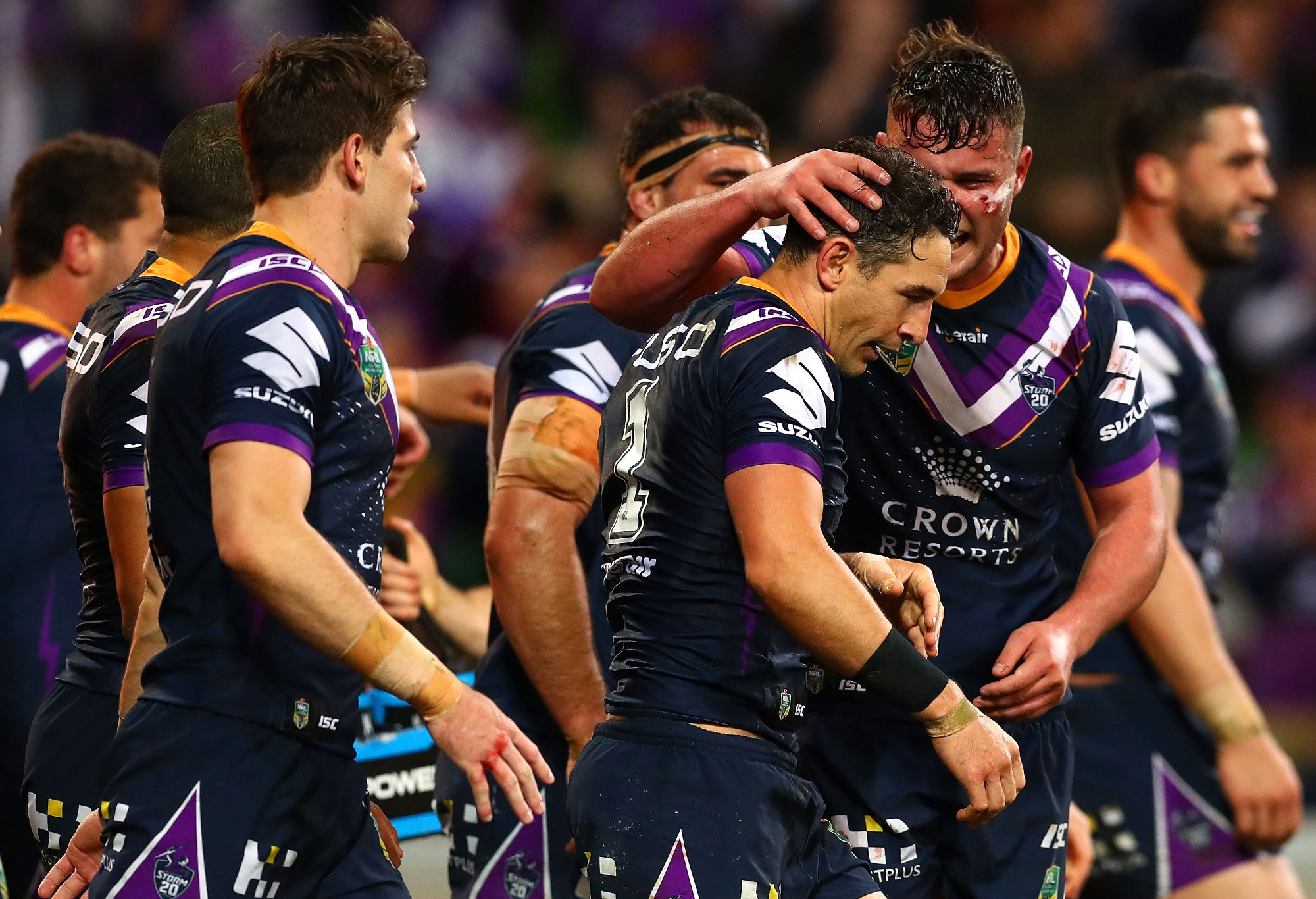
Billy Slater of the Storm (Photo by Kelly Defina/Getty Images)
There is also the risk that having a more liberal stance from the NRL and removing laws outlawing specific tackles and creating more outcomes-based rules may mean more serious injuries or potential deaths if the individual clubs to not improve internal policy on defensive strategies, discipline and training.
There would be strong moral and legal incentives for individual clubs to uphold a duty or care for all players in the NRL.
There would be financial incentive for clubs that did set out to improve these policies to keep their expensive player roster on the field instead of on the sidelines for several weeks at a time.
Is it time some of the onus was put back on the clubs to take responsibility for their players’ actions on the field? What do you think, Roarers?































































































